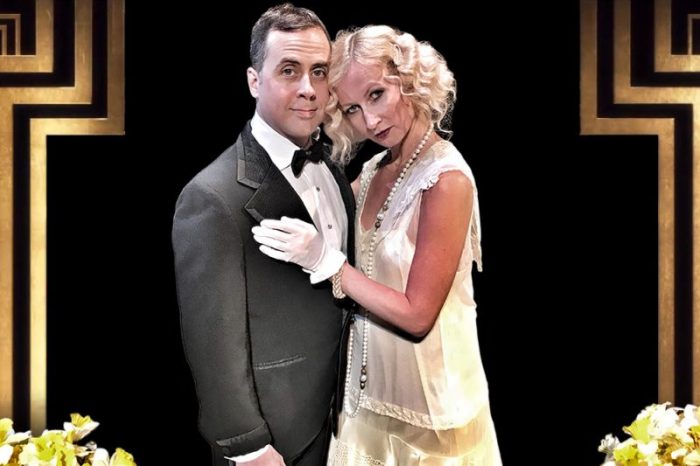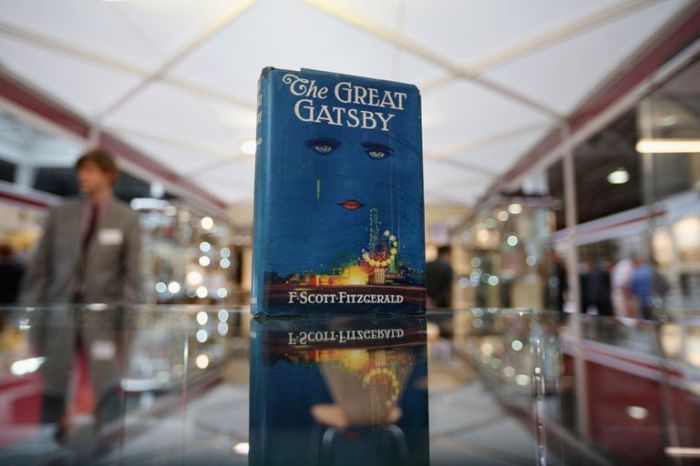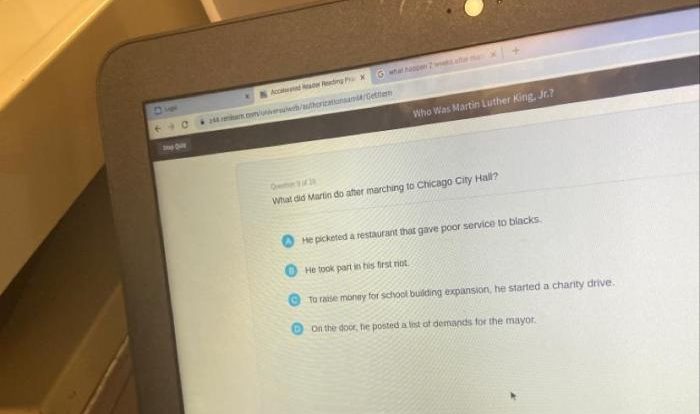The great gatsby a timeless tragedy quiz – The Great Gatsby: A Timeless Tragedy Quiz invites readers to delve into the depths of F. Scott Fitzgerald’s masterpiece, exploring its enduring themes, complex characters, and profound social commentary. This quiz challenges your understanding of the novel’s intricate tapestry, offering a unique opportunity to engage with its timeless insights and enduring legacy.
Through a series of thought-provoking questions, this quiz delves into the novel’s literary elements, character dynamics, historical context, and enduring significance. Whether you are a seasoned Gatsby enthusiast or a newcomer to its captivating world, this quiz promises an enriching and enlightening experience.
Literary Elements in “The Great Gatsby”
F. Scott Fitzgerald’s “The Great Gatsby” is a masterpiece of American literature renowned for its rich symbolism, evocative language, and profound themes.
Themes and Motifs:
- The American Dream and its unattainability
- The power of love and its destructive potential
- The illusion of social mobility
- The importance of personal responsibility
Symbolism and Foreshadowing:
- The green light at the end of Daisy’s dock symbolizes Gatsby’s unfulfilled dreams
- The Valley of Ashes represents the moral decay of the American Dream
- The eyes of Dr. T.J. Eckleburg foreshadow the novel’s tragic ending
Setting and Character Development:
The novel’s opulent setting in the Roaring Twenties provides a backdrop for the characters’ pursuit of wealth and happiness. The juxtaposition of East Egg and West Egg highlights the social divide between old and new money.
Character Analysis in “The Great Gatsby”: The Great Gatsby A Timeless Tragedy Quiz
Jay Gatsby:
- A self-made millionaire who yearns for Daisy Buchanan, the woman he lost
- Driven by a romantic obsession that blinds him to reality
- Ultimately a tragic figure who fails to achieve his dreams
Daisy Buchanan:
- A beautiful and wealthy woman who is torn between Gatsby and her husband, Tom
- Represents the unattainable ideal of the American Dream
- Her superficiality and selfishness contribute to the novel’s tragic ending
Tom Buchanan:
- Daisy’s husband, a wealthy and arrogant man
- Represents the corrupting influence of wealth and privilege
- His actions ultimately lead to Gatsby’s demise
Social Commentary in “The Great Gatsby”

The American Dream:
- The novel critiques the unattainability of the American Dream for those who do not come from wealth or privilege
- Fitzgerald highlights the corrosive effects of materialism and social inequality
- The characters’ pursuit of wealth and status leads to their downfall
Social Class and Wealth:
- The novel depicts the rigid social hierarchy of the 1920s
- Old money families like the Buchanans look down on new money families like the Gatsbys
- Fitzgerald exposes the hypocrisy and shallowness of the upper class
The Jazz Age and the Roaring Twenties:
- The novel captures the exuberance and excess of the Jazz Age
- However, Fitzgerald also shows the darker side of this era, including rampant alcoholism and moral decay
- The novel reflects the disillusionment that followed World War I
Historical Context of “The Great Gatsby”

World War I and Prohibition:
- The novel’s setting in the 1920s was shaped by the aftermath of World War I
- Prohibition led to widespread bootlegging and a rise in organized crime
- These factors contributed to the social unrest and moral decay depicted in the novel
Cultural and Social Changes:
- The 1920s witnessed significant changes in American culture and society
- The rise of the automobile and mass media led to increased mobility and communication
- Women gained more social and economic independence
Adaptations of “The Great Gatsby”

| Year | Medium | Director/Writer | Notable Features |
|---|---|---|---|
| 1926 | Stage play | Owen Davis | First stage adaptation of the novel |
| 1949 | Film | Elliott Nugent | First film adaptation, starring Alan Ladd and Betty Field |
| 1974 | Film | Jack Clayton | Critically acclaimed adaptation starring Robert Redford and Mia Farrow |
| 2000 | Opera | John Harbison | First operatic adaptation of the novel |
| 2013 | Film | Baz Luhrmann | Visually stunning adaptation starring Leonardo DiCaprio and Carey Mulligan |
Legacy of “The Great Gatsby”
Enduring Popularity:
- The novel has remained a popular classic for generations
- It is frequently taught in schools and universities
- The novel’s themes and characters continue to resonate with readers
Influence on Literature and Culture:
- The novel has influenced countless writers, including Ernest Hemingway and J.D. Salinger
- Its iconic imagery and language have become part of American culture
- The novel has been adapted into numerous films, plays, and operas
Relevance to Contemporary Society:
- The novel’s themes of wealth, inequality, and the pursuit of the American Dream remain relevant today
- Its exploration of the human condition makes it a timeless work of literature
- The novel continues to inspire and challenge readers of all ages
FAQ Guide
What is the significance of the green light at the end of Daisy’s dock?
The green light symbolizes Gatsby’s unattainable dream of recapturing the past and winning Daisy’s love.
How does the character of Nick Carraway contribute to the novel?
Nick serves as the narrator and provides an objective perspective on the events and characters, allowing readers to form their own interpretations.
What is the role of wealth and social class in The Great Gatsby?
Wealth and social class play a crucial role in shaping the characters’ lives and relationships, highlighting the novel’s critique of materialism and the American Dream.
